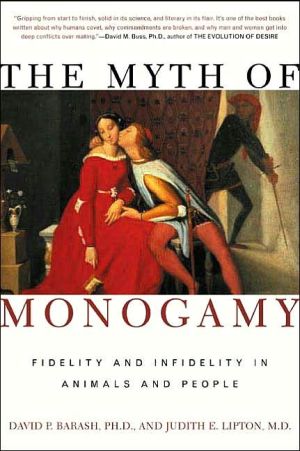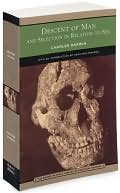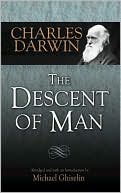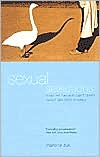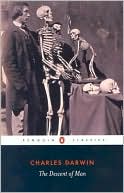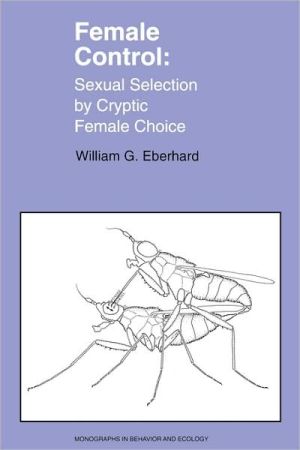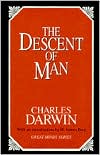The Myth of Monogamy: Fidelity and Infidelity in Animals and People
Applying new research to sex in the animal world, esteemed scientists David P. Barash and Judith Eve Lipton dispel the notion that monogamy comes naturally. In fact, as The Myth of Monogamy reveals, biologists have discovered that for nearly every species, cheating is the rule — for both sexes.\ Reviewing findings from the same DNA fingerprinting science employed in the courtroom, Barash and Lipton take readers from chickadee nests to chimpanzee packs to explain why animals cheat. (Some...
Search in google:
Using modern DNA technology, biologists can trace parenthood in animals for the first time. The astonishing results: even among those species previously thought to be monogamous, cheating on your mate is the rule-for both sexes. Find out why-and what it means for today's families. Booknews Husband and wife for nearly 25 years, Barash (zoology; psychology, U of Washington) and Lipton (psychiatry) take a biological look at what is generally a moral issue. They present information from the biological community to investigate whether or not monogamy is a natural form of relationship among a variety of non-human species, including invertebrates, insects, bird and mammals. They discuss the forms that monogamy and infidelity take among non-human species, and possible biological reasons for, and advantages of, various relationship behaviors. They conclude that, while monogamy may be natural to some species, for the majority it is not; and they find that infidelity is initiated by males and females alike. These findings are used to posit a biological explanation for monogamy and infidelity in humans. The book is written in an accessible, sometimes humorous style, while striving to offer a serious, scientifically- based explanation for what is generally an emotional and controversial subject in many cultures. Annotation c. Book News, Inc., Portland, OR (booknews.com)
1. Monogamy for Beginners\ Anthropologist Margaret Mead once suggested that monogamy is the hardest of all human marital arrangements. It is also one of the rarest. Even long-married, faithful couples are new at monogamy, whether they realize it or not. In attempting to maintain a social and sexual bond consisting exclusively of one man and one woman, aspiring monogamists are going against some of the deep-seated evolutionary inclinations with which biology has endowed most creatures, Homo sapiens included. As we shall see, there is powerful evidence that human beings are not "naturally" monogamous, as well as proof that many animals, once thought to be monogamous, are not. To be sure, human beings can be monogamous (and it is another question altogether whether we should) but make no mistake: It is unusual, and difficult. \ \ As G. K. Chesterton once observed about Christianity, the ideal of monogamy hasn't so much been tried and found wanting; rather, it has been found difficult and often left untried. Or at least, not tried for very long. \ \ The fault - if fault there be - lies less in society than in ourselves, and our biology. Thus, monogamy has been prescribed for most of us, by American society and by Western tradition generally; the rules as officially stated are pretty clear. We are supposed to conduct our romantic and sexual lives one-on-one, within the designated matrimonial playing field ... but as in soccer or football, sometimes people go out of bounds. And not uncommonly, there is a penalty assessed if the violation is detected by a referee. For many people, monogamy and morality are synonymous. Marriage isthe ultimate sanction and departures from marital monogamy are the ultimate interpersonal sin . Indeed, George Bernard Shaw once commented acerbically that "morality consists of suspecting other people of not being legally married." \ \ Ironically, however, monogamy itself isn't nearly as uncomfortable as are the consequences of straying from it, even, in many cases, if no one finds out. Religious qualms aside, the anguish of personal transgression can be intense (at least in much of the Western world) and those especially imbued with the myth of monogamy often find themselves beset with guilt, doomed like characters from a Puritan cautionary tale to scrub eternally and without avail at their adultery-stained souls, often believing that their transgression is not only unforgivable, but unnatural. For many others - probably the majority - there is regret and guilt aplenty in simply feeling sexual desire for someone other than one's spouse, even if such feelings are never acted upon. When Jesus famously observed that to lust after another is to commit adultery in one's heart, he echoed and reinforced the myth of monogamy, the often-unspoken assertion that even desire-at-a-distance is not only wrong, but a uniquely human sin. \ \ Whether such inclinations are wrong is a difficult, and perhaps unanswerable question. But as we shall see, thanks to recent developments in evolutionary biology combined with the latest in biomolecular technology, there is simply no question whether sexual desire for multiple partners is "natural." It is. Similarly, there is simply no question of monogamy being "natural." It isn't.\ \ Social conservatives out what they see as a growing threat to "family values." But they don't have the slightest idea how great that threat really is, or where it comes from. The monogamous family is very definitely under siege, and not by government, a declining moral fiber, and certainly not some vast homosexual agenda ... but from the dictates of biology itself. Infants have their infancy, and adults? Adultery. \ \ The poet Ezra Pound once observed (somewhat self-servingly) that artists are the "antennae of the race." These antennae have long been twitching about extramarital affairs. If literature is any reflection of human concerns, then infidelity has been one of humankind's most compelling, long before biologists had anything to say about it. The first great work of Western literature, Homer's Iliad, recounts the consequences of adultery: Helen's face launched a thousand ships and changed the course of history only after it first launched an affair between Helen, a married woman and Greek queen, and Paris, son of King Priam of Troy. Helen proceeded to leave her husband Menelaius, thereby precipitating the Trojan War. And in the Odyssey, we learn of Ulysees' return from that war, whereupon he slays a virtual army of suitors, each of whom was trying to seduce his faithful wife, Penelope. (By contrast, incidentally, Ulysees himself had dallied with Circe the sorceress, but was not considered an adulterer as a result. The double standard is ancient and by definition unfair; yet it, too, is firmly rooted in biology.)\ \ It seems that every great literary tradition, at least in the Western world, finds it especially fascinating to explore monogamy's failures: Tolstoy's Anna Karenina, Flaubert's Madame Bovary, Lawrence's Lady Chatterly's Lover, Hawthorne's The Scarlet Letter, Henry James' The Golden Bowl. More recently, John Updike's marriage novels - not to mention scores of soap operas and movies - describe a succession of suburban, middle class affairs. The present book, by contrast, is not fiction. And it is not concerned with affairs as such, but rather, with the biological underpinnings of affairs, in human beings and other animals as well; more precisely, it is about what modern biological research has been revealing about the surprisingly weak biological underpinnings of monogamy. \ \ * * * \ \ But it is one thing to prove or disprove the possibility of parentage - to say that someone could, or alternatively, could not, be the father - and quite another to say with certainty that he is. \ \ Such certainty is now available. It required the next and most significant breakthrough to date on the way toward disproving the myth of monogamy: The discovery of "DNA fingerprinting," not only for human beings, but also animals . Just as each person has a unique fingerprint, each of us has a unique pattern of DNA, so-called minisatellite regions that are "hypervariable," offering a range of possibility that encompasses more than a hundred million different identifying traits, far more than, for example, blood types A, B, AB or O. As a result, just as each citizen of the United States can be uniquely identified by a personalized social security number (so long as we allow enough digits), specification to guarantee that only one individual will possess a particular pattern. \ \ Given tissue samples from offspring and adults, we can now specify, with certainty, whether a particular individual is or is not the parent, just as it is possible to specify, with certainty, the donor of any sample of blood, hair or semen. After subjecting the tissue to appropriate treatments, research technicians end up with a DNA profile that looks remarkably like a supermarket bar-code, and with about this level of unique identification. Armed with this technique, field biologists - studying the behavior of free-living animals in nature - have at long last been able to pinpoint parenthood. As a result the field of "biomolecular behavioral ecology" has really taken off, and with it, our understanding of a difference that may sound trivial but is actually profound: between "social monogamy" and "sexual monogamy."\ \ Two individuals are socially monogamous if they live together, nest together, forage together, copulate together, and typically rear offspring together. Seeing all this togetherness, biologists not surprisingly used to assume that the animals they studied were also mixing their genes together, that the offspring they reared (usually, together) were theirs and theirs alone. But thanks to DNA fingerprinting, we have been learning that it ain't necessarily so. Animals - not unlike people - sometimes fool around, and much more often than had been thought. When it comes to actual reproduction, even bird species long considered the epitome of social monogamy and thus, previously known for their fidelity, are now being revealed as sexual adventurers Or at least, as sexually non-monogamous. \ \ * * *\ \ It is difficult to overstate the conceptual revolution that has followed the discovery that copulations - and in many cases, fertilizations - often take place outside the social unions that researchers typically identify. After all, reproductive success is the fundamental currency of evolutionary success, and behavioral ecologists and sociobiologists studying red-winged blackbirds, for example, have long been in the habit of evaluating the reproductive success of their male subjects by counting harem size or, better yet, the number of young birds produced by all of a male's "wives." But now, comes word that in this polygynous species, too, females don't restrict their mating to the harem-keeper. It turns out that there is no necessary correlation between a male red-winged blackbird's apparent reproductive success (the number of offspring reared on his territory) and his actual reproductive success (the number of offspring he fathered). Similarly, there is no guaranteed correlation between his harem size and his actual reproductive success: A male red-winged blackbird (like a male Turkish sultan) can "have" many wives - which in turn can have many offspring - but those children might not be his . \ \ The pattern is painfully clear: In the animal world generally, and the avian world in particular, there is a whole lot more screwing around than we had thought. (As to the human world, most people have long known that there is a whole lot more of the same than is publicly - or even privately - acknowledged.) \ \ When it comes to mam rarity. Out of 4,000 mammal species, no more than a few dozen form reliable pair-bonds, although in many cases it is hard to characterize them with certainty, because the social and sexual lives of mammals tend to be more furtive than those of birds. Monogamous mammals are most likely to be bats (a few species only), certain canids (especially foxes), and a few primates, notably the tiny New World monkeys known as marmosets and tamarins, a handful of mice and rats, several odd-sounding South American rodents (agoutis, pacas, acouchis, maras), the giant otter of South America, the northern beaver, a handful of species of seals, and a couple of small African antelopes (duikers, dik-diks, and klipspringers). \ \ Even females in seemingly solitary species such as orangutans, gibbons, and black bears have been found to copulate with more than one male; hence, observations of social organization alone clearly can be misleading . Until recently, lacking the appropriate genetic techniques, we had little choice but to define monogamy by the social relationships involved; only with the explosion of DNA fingerprinting technology have we started to examine the genetic connections, those most important to evolution. Thus, according to the highly-respected book by David Lack, Ecological Adaptations for Breeding in Birds, fully 92% of bird species are monogamous. Socially, this figure is still accurate; sexually, it is way off. The highest known frequency of extra-pair copulations are found among the fairy wrens, lovely tropical creatures technically known as Malurus spendens and Malurus cyaneus. More than 65 percent of all fairy wren chicks are fathered by males outside the supposed breeding group . Here is another eye-opener. Warblers and tree swallows are purportedly monogamous, yet when genetic analyses were conducted on six different offspring in two different species, they were found to have been fathered by five different males! \ \ Although such cases are admittedly extreme, we now know that it is not uncommon for 10 to 40 percent of the offspring in "monogamous" birds to be fathered by an "extra-pair" male; that is, one who isn't the identified social mate of the female in question. (It is much less common for offspring to be "mothered" by an extra-pair female; that is, for an outsider female to slip one of her eggs into the nest of a mated pair. More on this later.)\ \ Given how much we have been learning about non-monogamy and extra-pair matings among animals, and considering the new-found availability of such testing, it is remarkable how rarely genetic paternity tests have been run on human beings. On the other hand, considering the inflammatory potential of the results, as well as, perhaps, a hesitancy to open such a Pandora's Box, perhaps Homo sapiens' reluctance to test itself for paternity is sapient indeed. Even prior to DNA fingerprinting, blood group studies in England found that the purported father is the genetic father about 94% of the time; this means that for six out of a hundred people, someone else is the genetic father . In response to surveys, between 25% and 50% of United States men report having had at least one episode of extramarital sex . The numbers for women are perhaps a bit lower - around 30% - but still in the same ballpark . Many people already know quite a lot - probably more than they would choose to know - about the painful and disruptive effects of extramarital sex. It wouldn't be surprising if a majority would rather not know anything more about its possible genetic consequences, extramarital fatherhood. Maybe ignorance is bliss. (If you feel this way, better stop reading here!)\ \ Until quite recently, multiple mating was hidden from biologists' purview. It wasn't so much invisible as unacknowledged, a perfect example of the phenomenon that even in such a seemingly hard-headed pursuit as science, believing is seeing. More to the point, not believing is not seeing. Sexual infidelities among ostensibly monogamous species, when noticed at all by biologists, were generally written off as aberrant, not worth describing, and certainly not suitable for analysis or serious theory. Distasteful as it may have been, Geoffrey Parker's work changed that, along with this important recognition by evolutionary theoretician Robert Trivers. A "mixed strategy" should be favored, at least among males: Maintain a pair bond with a female, who you might well assist in rearing offspring, but be ready and available for additional copulations if the opportunity arises. The next step was to ask: What about the female? Is she merely a passive recipient of male attentions, an empty tank to be filled with the sperm of various competing paramours? Or does she choose among the eager male prospects? Might she even actively solicit extra-pair copulations, generating sperm competition among different males? \ \ Early work, both empirical research and theorizing, took a decidedly male-centered perspective on multiple mating, emphasizi males maximize their paternity by being sexually available to more than one female whenever possible, also competing with each other directly (by bluffing, displaying, and fighting) and indirectly by guarding their mates, as well as by using an array of anatomical, physiological and behavioral techniques - such as frequent copulations - to give them an advantage over other males. \ \ More recently, biologists have begun to identify how females partake of their own strategies: mating with more than one male, controlling (or at least, influencing) the outcome of sperm competition, sometimes obtaining direct, personal benefits such as food or protection in return for these extra-pair copulations, as well as gaining indirect, genetic benefits that eventually accrue to their offspring. A penchant for non-monogamy among males is no great surprise, but as we shall see, the most dramatic new findings and revised science brought about by recent demolitions of the myth of monogamy concern the role of females. Freud spoke more truth than he knew when he observed that female psychology was essentially a "dark continent." A well integrated theory of female sexuality in particular still remains to be articulated; perhaps a reader of this book will be suitably inspired.\ \ More on this, too, later. In fact, much more. It is no coincidence that two separate chapters are devoted to the female perspective. It is a viewpoint that we are only now beginning to identify, and just barely to understand.
Chapter 1Monogamy for Beginners1Chapter 2Undermining the Myth: Males15Chapter 3Undermining the Myth: Females (Choosing Male Genes)57Chapter 4Undermining the Myth: Females (Other Considerations)87Chapter 5Why Does Monogamy Occur At All?113Chapter 6What Are Human Beings, Naturally?139Chapter 7So What?181Notes193Index223
\ From the Publisher"A highly readable, light-hearted survey of monogamy and its variations across the animal kingdom."\ —Nature\ "Gripping from start to finish, solid in its science, and literary in its flair . . ."\ —David M. Buss, Ph.D., professor of psychology, University of Texas\ "A smart, intriguing, witty, non-sexist, provocative yet careful book about the realities . . . 'infidelity.' "\ —Pepper Schwartz, Ph.D.\ \ \ \ \ \ BooknewsHusband and wife for nearly 25 years, Barash (zoology; psychology, U of Washington) and Lipton (psychiatry) take a biological look at what is generally a moral issue. They present information from the biological community to investigate whether or not monogamy is a natural form of relationship among a variety of non-human species, including invertebrates, insects, bird and mammals. They discuss the forms that monogamy and infidelity take among non-human species, and possible biological reasons for, and advantages of, various relationship behaviors. They conclude that, while monogamy may be natural to some species, for the majority it is not; and they find that infidelity is initiated by males and females alike. These findings are used to posit a biological explanation for monogamy and infidelity in humans. The book is written in an accessible, sometimes humorous style, while striving to offer a serious, scientifically- based explanation for what is generally an emotional and controversial subject in many cultures. Annotation c. Book News, Inc., Portland, OR (booknews.com)\ \
